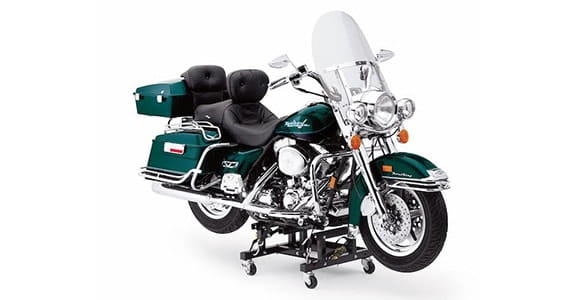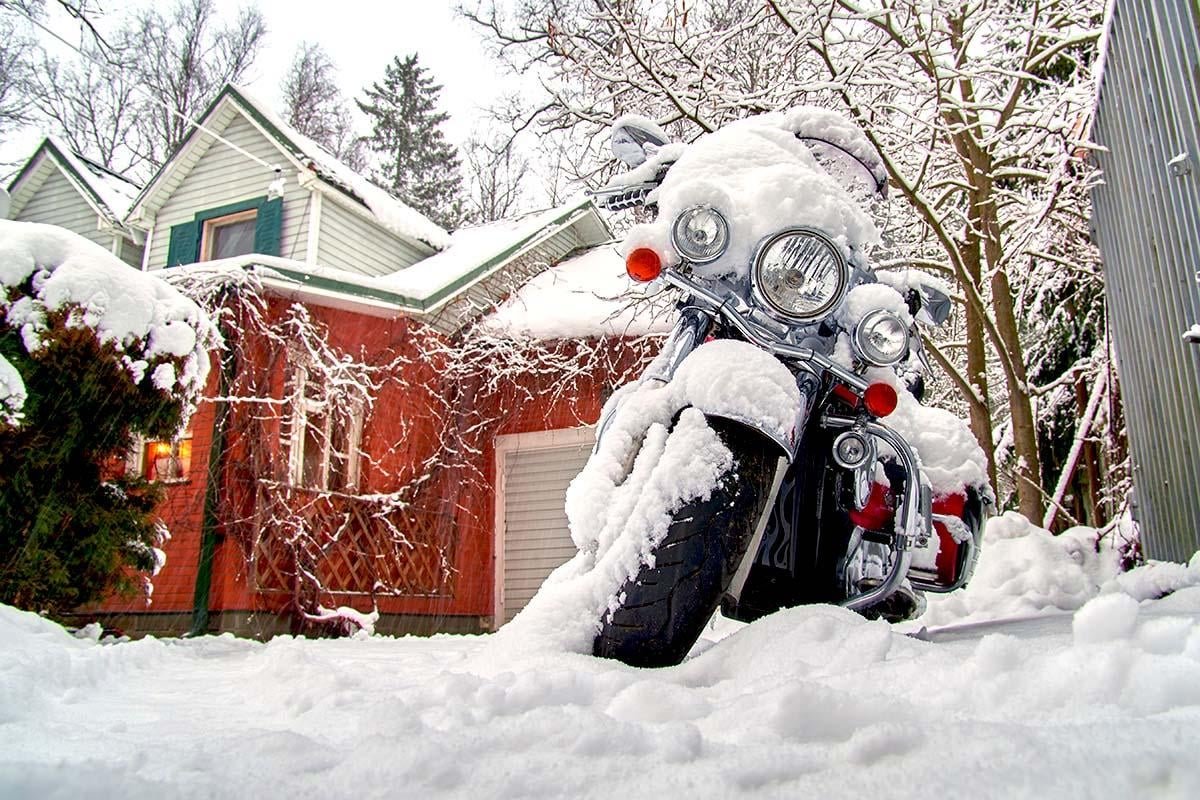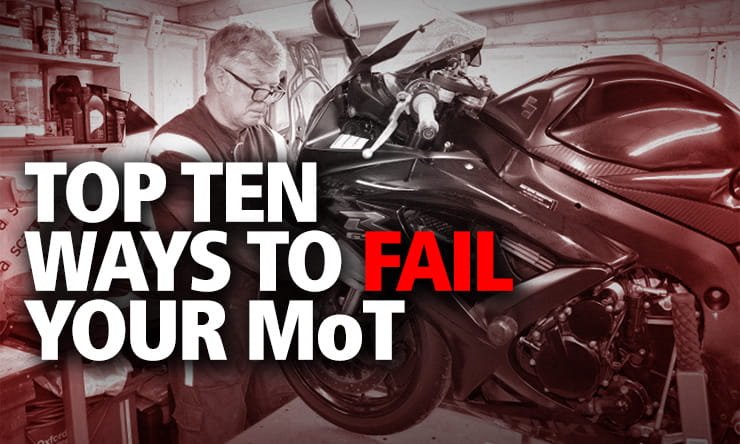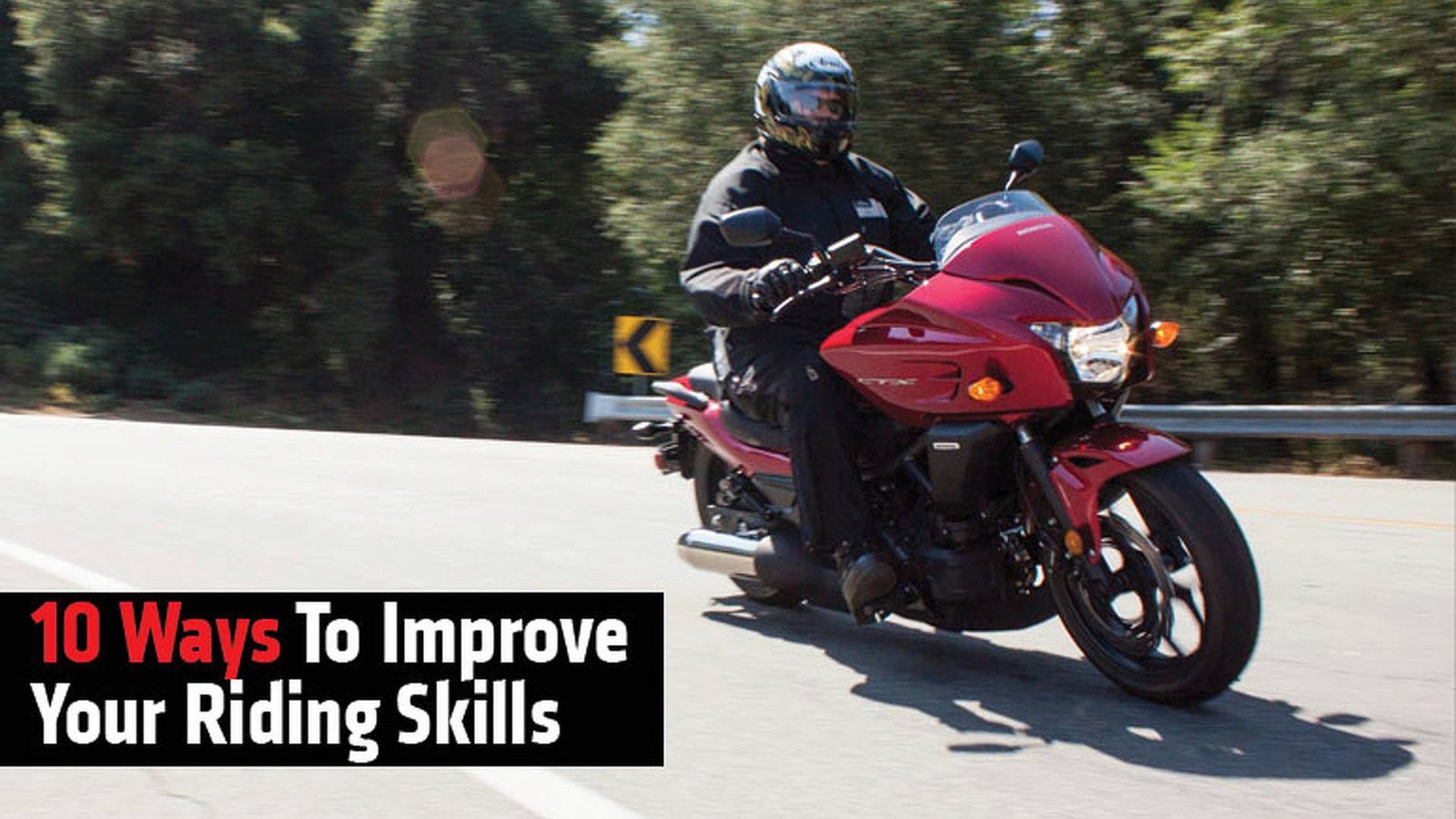To properly store a motorcycle for winter, clean it, fill the gas tank, add stabilizer, and change the oil. Store the bike in a dry place on a stand to prevent tire damage.
Preparing your motorcycle for winter storage is essential to ensure its longevity and readiness for the next riding season. As temperatures drop, your bike needs protection from the harsh elements and potential mechanical issues that come with extended inactivity. The process involves a series of steps that safeguard the engine, fuel system, battery, and tires, helping to prevent rust, degradation, and the frustration of avoidable repairs.
A comprehensive approach not only maintains the aesthetic appeal of your motorcycle but also contributes to preserving its value. Starting with a thorough cleaning to remove dirt and debris, you’ll move on to the mechanical aspects, which include lubricating moving parts, protecting the engine internals with fresh oil, and taking measures to keep the battery charged.
By following these best practices, you can rest easy knowing your motorcycle will remain in top condition, ready to hit the road when warmer days return.
Table of Contents
Preparing For Winter Storage
As temperatures drop, securing your motorcycle’s health through proper winter storage becomes crucial. Shielding your bike from the elements and ensuring it’s ready to ride come spring is all in the prep work. Here’s how to keep your motorcycle safe and sound through the frosty months.
Cleaning Your Motorcycle
A thorough clean is the first step in winterizing your motorcycle. Follow these pointers to ensure your bike is spotless:
- Wash off dirt and debris with a gentle soap.
- Pay special attention to metal surfaces that are prone to rust.
- Rinse with low-pressure water to avoid forcing water into sensitive areas.
- Ensure the bike is completely dry to avoid corrosion.
- Finish with a wax coat for added protection.
Draining Fluids And Lubricating Moving Parts
Fluids can deteriorate and damage your motorcycle’s engine if not properly tended to. Be sure to:
| Task | Action |
|---|---|
| Drain Fuel | Add fuel stabilizer, run the engine to distribute, then top off the tank. |
| Change Oil | Replace old oil with fresh oil to prevent contaminants from harming your engine. |
| Brake Fluid | Check levels and quality; replace if necessary. |
| Coolant | If applicable, drain and refresh the coolant system to prevent freezing. |
| Chain and Cables | Lubricate to avoid rust and ensure flexibility. |

Credit: www.insurance.harley-davidson.com
Choosing The Right Environment
When winter arrives, your motorcycle needs a cozy home too. Choosing the Right Environment for long-term storage protects your bike. The space must be safe from weather and theft. Let’s explore the best spots to park your two-wheeled pal during the chilly months.
Indoor Versus Outdoor Storage
Indoor storage wins for keeping your motorcycle in top shape. It keeps your bike dry and safe. If inside space is not an option, a covered outdoor area can work. Make sure to cover your bike with a waterproof, breathable cover. This protects against moisture and dirt.
Controlling Humidity And Temperature
Controlling humidity and temperature is key to avoid rust and damage. An ideal storage spot has low humidity and a stable, cool temperature. A dehumidifier can keep moisture levels down. In colder areas, a garage with insulation helps maintain temperature. Use a thermometer to make sure your storage stays consistent.
Protecting The Fuel System
When the leaves start to fall and chilly winds blow, it’s time to tuck your motorcycle away for winter. One crucial step in winterizing your bike involves the fuel system. Left unchecked, your fuel system could suffer from clogs or corrosion. Let’s ensure your motorcycle emerges in spring ready for the road ahead.
Using Fuel Stabilizer
A fuel stabilizer keeps gas fresh during storage. This solution prevents the gas from deteriorating, which can create gum and varnish deposits. Here’s how to use it effectively:
- Choose a quality fuel stabilizer.
- Follow the manufacturer’s directions for the correct amount.
- Pour it into the gas tank before filling up.
- Run the engine for a few minutes to circulate the stabilizer through the system.
Filling The Tank
Filling the tank helps keep moisture out. Moisture can lead to rust, which is bad news for your fuel system. Here are the steps to fill up right:
- Add fresh fuel to fill the tank to the brim.
- Ensure the cap is firmly closed to stop moisture from entering.
- Consider using higher-octane gas to further guard against engine knocks.
Battery Maintenance
Preparing your motorcycle for winter storage includes key steps to maintain the battery. A well-maintained battery ensures a smooth start after the cold season. Let’s dive into the specifics of battery care during winter storage.
Disconnecting And Charging
Before storing your motorcycle, take care of the battery:
- Turn off the motorcycle and ensure it is on stable ground.
- Locate the battery and remove the seat or side panel if necessary.
- Using the right tools, detach the negative cable first, followed by the positive to avoid short circuits.
- Clean the terminals with a wire brush to remove corrosion.
- Charge the battery using a smart charger that can remain connected for the duration of the winter without overcharging.
Remember, a full charge is vital to prevent the battery from freezing.
Storing The Battery
Once the battery is fully charged and disconnected, follow these steps:
- Find a cool, dry place for storage, away from extreme temperatures.
- Place the battery on a clean, dry surface. Avoid placing it directly on concrete due to potential discharge.
- Cover the battery with a cloth to keep it dust-free.
- Check the charge monthly. If the voltage drops, recharge it to full capacity.
Proper storage extends your motorcycle battery’s life, making it ready for spring.
Tire Care
Proper tire maintenance is critical during winter storage. It ensures the longevity and readiness of your motorcycle for the next riding season. Caring for your tires during this downtime can prevent deterioration and save you from future repair costs.
Preventing Flat Spots
Tires can develop flat spots when a bike sits stationary for too long. Flat spots lead to uneven wear and reduced performance.
- Use motorcycle stands to lift the bike off the ground.
- Turn the wheels occasionally to redistribute the pressure.
- Consider a tire cushion or padded mat for additional support.
Inflating To The Correct Pressure
Correct tire pressure is critical for tire health during storage. It avoids stress on tire walls and maintains shape.
| Tire Type | Pressure (PSI) |
|---|---|
| Standard | Check manual |
| Sport | Check manual |
- Check the manufacturer’s guidelines for recommended pressure.
- Use a quality gauge to ensure accuracy
- Recheck pressure before the first ride after storage.
Covering And Protecting Your Bike
Covering and protecting your bike is crucial during winter storage. A well-covered motorcycle stays clean and shielded from the elements. Proper protection prevents rust and keeps it looking as good as new. Learn to select the right cover and keep those pesky rodents at bay with the following tips.
Choosing A Motorcycle Cover
Selecting the perfect cover for your motorcycle involves understanding your bike’s size and the type of cover that suits your storage environment. A suitable cover acts as a barrier against dust, moisture, and scratches. Find a breathable yet waterproof option to avoid moisture buildup, which can lead to corrosion.
- Measure your bike to ensure a snug fit.
- Look for waterproof and breathable fabrics.
- Ventilation is key to prevent condensation.
- Pick a cover with soft lining to protect the paint.
- Choose a cover with grommets or locks for security.
Thwarting Pests And Rodents
Rodents can cause damage by chewing on wires and nesting in small spaces. Keeping them away protects your motorcycle’s vital parts. Use natural repellents and secure openings to make your bike less appealing to these critters.
| Method | Details |
|---|---|
| Seal Openings | Plug gaps with steel wool or metal mesh. |
| Use Repellents | Place peppermint oil or mothballs around the bike. |
| Securely Cover | Cover your bike with a well-fitted cover that reaches the ground. |
| Regular Checks | Inspect your storage area frequently for signs of pests. |
Final Checks And Reminders
As the chill in the air grows sharper, your motorcycle requires special care. ‘Final Checks and Reminders’ ensure a smooth revival come spring. Follow these vital steps to safeguard your bike during winter hibernation.
Reviewing Motorcycle Insurance
Check your motorcycle insurance policy before taking away your bike. Confirm coverage for off-season perils such as theft or environmental damage. It might be tempting to cancel insurance during winter, but maintaining it could protect against unforeseen risks. Update personal details and possible discounts with your provider for seamless coverage.
Setting A Spring Readiness Plan
Create a spring readiness checklist to ensure your motorcycle emerges from winter storage in top condition. Assign a day for your motorcycle’s revival to prioritize its needs. Include tasks such as:
- Inspecting battery charge
- Changing engine oil
- Checking tire pressure
- Cleaning and lubricating the chain
Staying organized with a targeted plan aids in a hassle-free start to the riding season.
Additional Reminders
| Reminder | Detail | Action |
|---|---|---|
| Fuel Stabilizer | Prevents gas degradation | Add according to instructions |
| Fluid Levels | Brakes, coolant, oil | Top up or change |
| Tire Positions | Avoid flat spots | Rotate or lift off ground |
Remember to keep your motorcycle in a dry, secure location to protect from moisture and theft. Cover your bike with a breathable fabric to keep dust at bay. A well-executed storage plan will ensure your motorcycle stays in pristine condition throughout the colder months.
FAQ
Should I Cover My Motorcycle In A Garage For Winter?
Yes, covering your motorcycle even in a garage during winter can protect it from dust, debris, and moisture buildup.
Is It Ok To Leave Motorcycle Out In Winter?
Leaving a motorcycle outside in winter is not ideal as it exposes the bike to elements that could cause damage. Protect it with a weatherproof cover or store indoors if possible. Regular maintenance during winter helps prevent long-term issues.
How Do I Prepare My Motorcycle For Long Term Storage?
To prepare your motorcycle for long-term storage, clean it thoroughly, fill the tank and add a fuel stabilizer. Drain the carburetor if applicable, change the oil, and remove the battery to prevent discharge. Elevate the tires to avoid flat spots. Cover the bike to protect it from dust.
Can You Store A Motorcycle In A Unheated Garage?
Yes, you can store a motorcycle in an unheated garage. Take necessary precautions against moisture and temperature fluctuations to protect your bike.
Bottom Line
Storing your motorcycle correctly over winter protects it from damage and ensures a smooth ride come spring. Adopt these tips to maintain your bike’s longevity and performance. Remember, a well-preserved motorcycle means less hassle and more road time when warmer days return.
Ride on, knowing your bike is winter-ready!




Leave a Reply